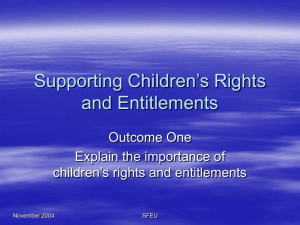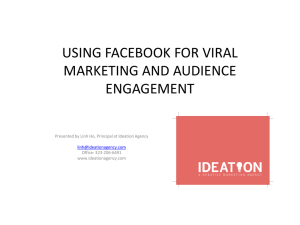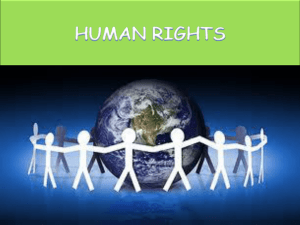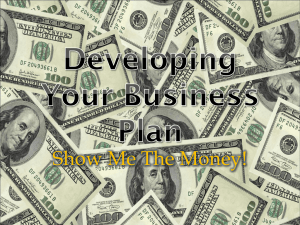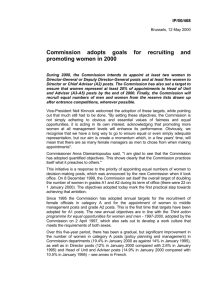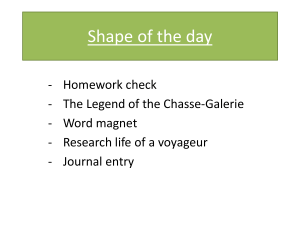Sustainable Development
advertisement
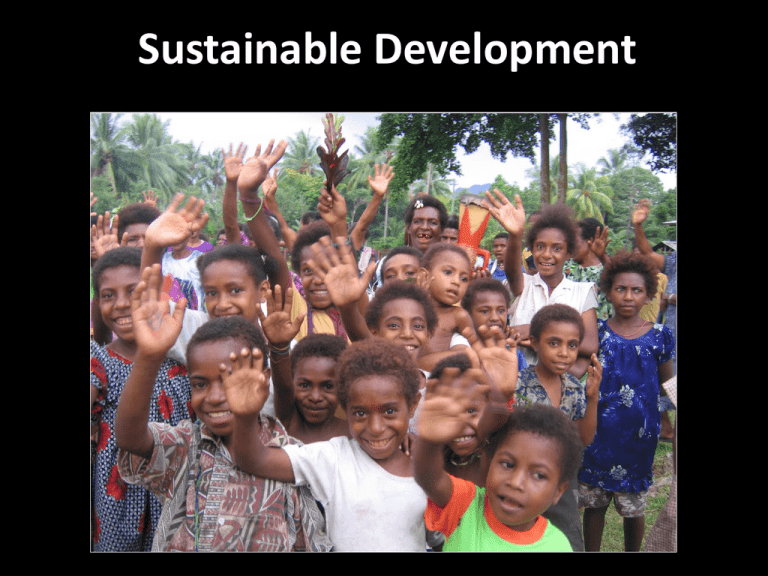
Sustainable Development Sustainable development is a process that empowers people in poor communities to ultimately help themselves. Sustainable development is powerful, longlasting development. Sustainable development is an EMPOWERING process that places those being affected at the centre of their own development. People are equipped with the necessary knowledge, skills and appropriate values and attitudes to act and manage their own development. Sustainable Development is a HOLISTIC approach that considers: • • • • Human Rights Gender Equity Environment Effective Communication Sustainable development is non-discriminatory and protects the dignity of all people. It does not discriminate on the basis of race, colour, gender, religion, political opinion, national or social origin, or birth status. All sustainable development projects must be: • Planned • Monitored and • Evaluated Development considers Human Rights Sustainable development must take into account basic human rights as agreed upon in 1948 by all member countries of the United Nations. UN Declaration of Human Rights In 1948 the United Nations passed the · Freedom of peaceful assembly and of Declaration of Human Rights. Here is a association summary of that document. · Seek and receive information and ideas Every human being has the right to: · Take part in politics · Life · Work · Liberty and security of person · Fair wages and equal pay for equal · Not be a slave work · Not be tortured · Social security · Protection of the law · A decent standard of living · A fair and public hearing in the courts · Join a trade union · Be presumed innocent until proved · Rest and leisure guilty · Education · Freedom of movement and residence · Marry and raise a family All of these rights apply to everyone regardless of race, colour, gender, · Own property language, religion, · Freedom of thought, conscience or political opinion, social origin, religion property or birth order. · Freedom of opinion and expression Sustainable Development Includes: Men and women of the community Long-term Planning Infrastructure building (with local products and people power) • • • • Roads Housing Dams Buildings – including schools and medical posts Water and food availability and security • Building water posts or wells • Growing and rotating crops • Growing different vegetables for variety Income generation • Teaching practical ways for families to become self-sufficient Health Education • • • • • Eating a variety of foods Washing hands Safe toileting Brushing teeth Visiting a medical post when ill • Etc Primary school education HIV/AIDS Education Birth Education Peace and Reconciliation Education Conservation of nonrenewable resources and finding alternate resources Advocacy A knowledge of how to network • With local governments • With state and federal governments • With other development organisations in the area ALWS and Sustainable Development – Dare to Dream a Different World
